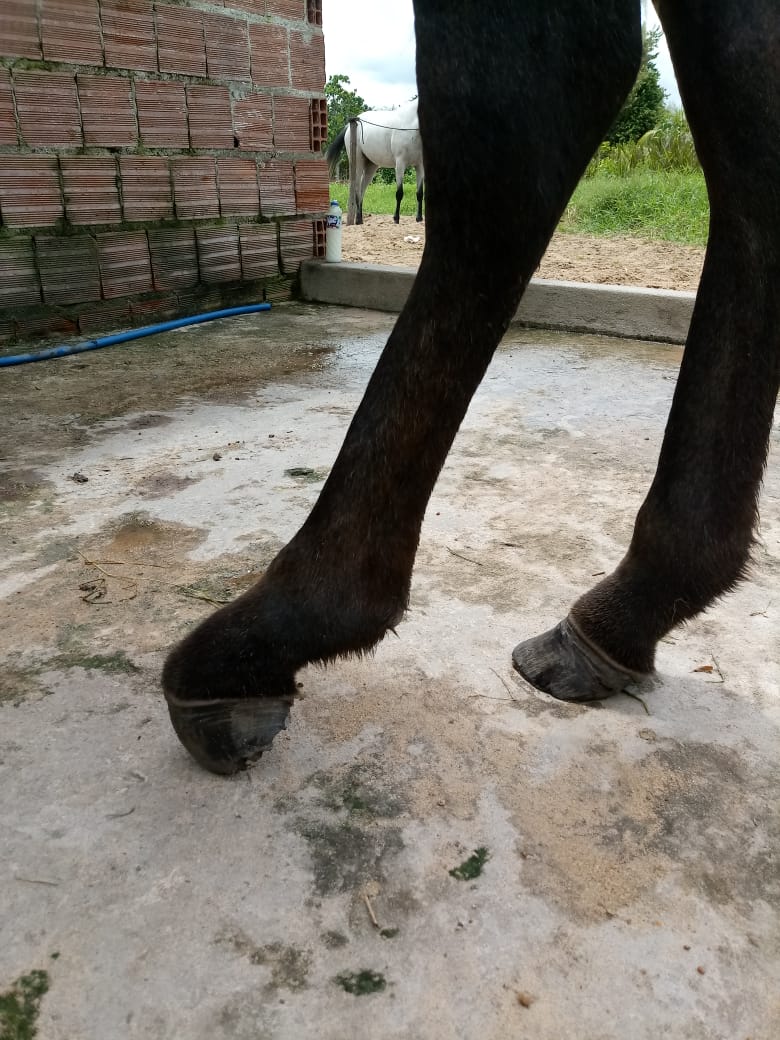Interfalangeal flexural deformity in a pelvic limb of an american quarter horse: a case report
DOI:
https://doi.org/10.21708/avb.2020.14.3.9210Resumo
Flexural deformity in growing animals is a condition in which a joint is kept in a flexed or abnormally extended position. In foals, it is characterised mainly by deviation of the limbs. As such, the aim is to report a case of flexural deformity in a pelvic limb of Quarter Horse. The animal was treated at the Jerônimo Dix-Huit Rosado Maia Veterinary Hospital (HOVET-UFERSA): a female, with dappled coat, approximately two years of age, presenting with interphalangeal flexural deformity of the left pelvic limb. In the anamnesis, the owner reported that the animal had shown the deformity from six months of age, and on physical examination, presented grade IV lameness of the left pelvic limb, excessive wear of the toe, with the limb offering no support. Upon palpation, contracture of the superficial and deep digital flexor tendons was identified. Surgical treatment was therefore chosen, including tenotomy of the deep digital flexor tendon together with desmotomy of the lower check ligament. Medicinal therapy based on antibiotics and an anti-inflammatory was carried out, in addition to corrective trimming of the hoof and a horseshoe with toe extension; cleaning and changing the dressing was performed every 48 hours, and active physical therapy was given through a daily 15-minute walk. After 15 days hospitalisation, the animal was discharged, showing considerable improvement in its clinical condition, with a reduction in the degree of contraction of the flexor tendons, and grade I lameness. The surgical wound had fully healed, and there was no inflammation or infection.
Downloads

Downloads
Publicado
Edição
Seção
Licença
Autores que publicam na Acta Veterinaria Brasilica concordam com os seguintes termos: a) Autores mantém os direitos autorais e concedem à revista o direito de primeira publicação, com o trabalho simultaneamente licenciado sob a Licença Creative Commons Attribution que permite o compartilhamento do trabalho com reconhecimento da autoria e publicação inicial nesta revista. b) Autores têm autorização para assumir contratos adicionais separadamente, para distribuição não-exclusiva da versão do trabalho publicada nesta revista (ex.: publicar em repositório institucional ou como capítulo de livro), com reconhecimento de autoria e publicação inicial nesta revista. c) Autores têm permissão e são estimulados a publicar e distribuir seu trabalho online (ex.: em repositórios institucionais ou na sua página pessoal) a qualquer ponto antes ou durante o processo editorial, já que isso pode gerar alterações produtivas, bem como aumentar o impacto e a citação do trabalho publicado (Veja O Efeito do Acesso Livre).


 Esta obra está licenciada com uma Licença
Esta obra está licenciada com uma Licença 